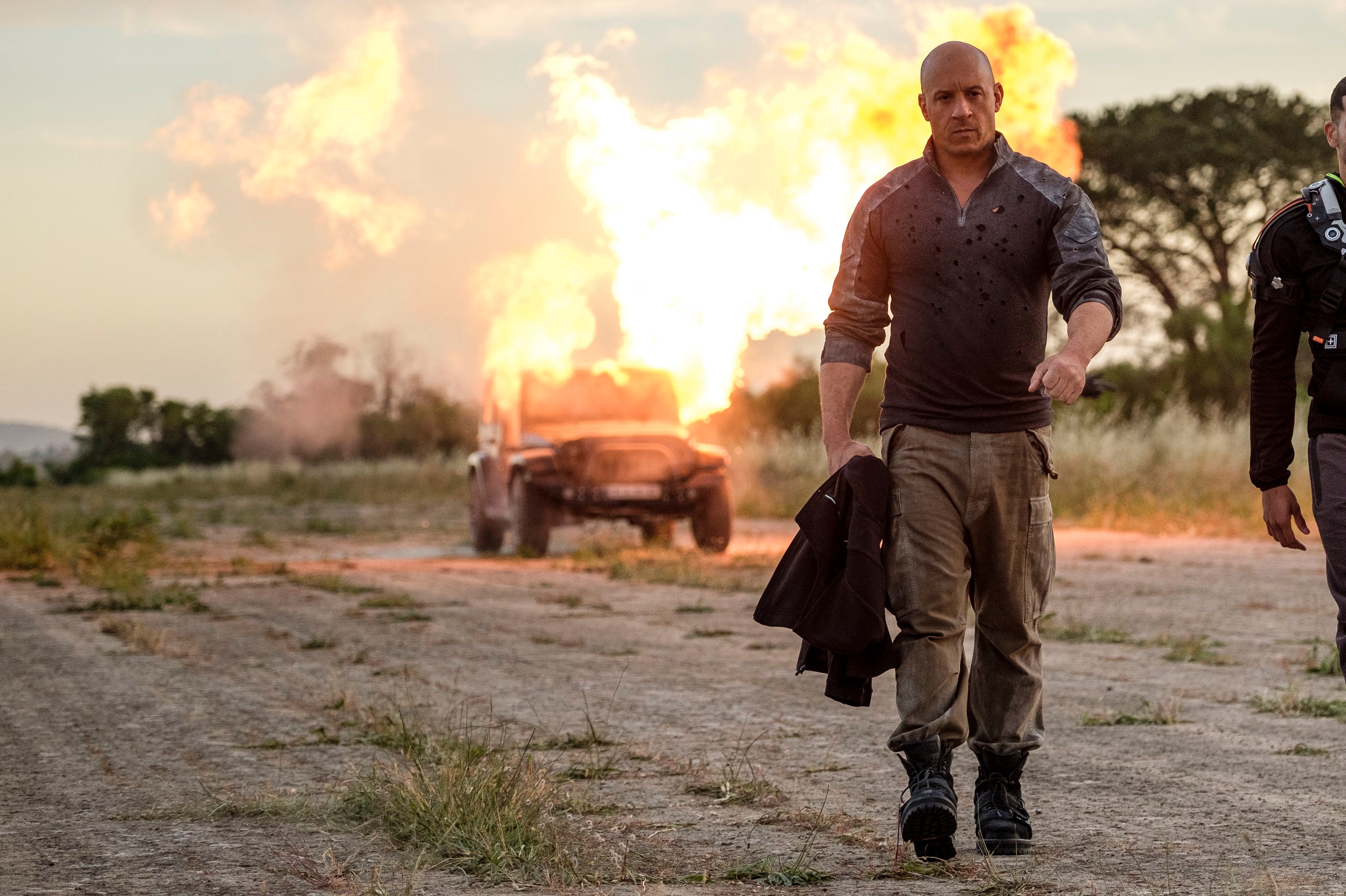Create a free profile to get unlimited access to exclusive videos, sweepstakes, and more!
Director Dave Wilson knows Bloodshot is filled with clichés — and that's the point

If you found yourself wincing at the parade of oft-used action film tropes that make up the first act of Bloodshot, you're not alone. Director Dave Wilson is with you.
**Spoilers for Bloodshot in the story below.**
"I watched the first 15 minutes of my movie and I'm always like, 'Oh my God, there's so many cliches in this thing!'" Wilson admits to SYFY WIRE. But there's a method to that seemingly bad movie-making madness; it's only revealed once you get past the necessary exposition and the incidents that sketch out the uber-macho life of soldier Ray Garrison / Bloodshot (Vin Diesel).
It's only once we know Garrison is ruthless in executing his government missions so he can return home to his beloved wife, Gina (Talulah Riley), that Wilson can mess with your expectations. That affords him the opportunity to present the bad guy (Toby Kebbell) ostentatiously dancing to "Psycho Killer" right before he murders Gina in front of a helpless Garrison, so that the hero and the audience can be manipulated together.
"It's like an ode to movie making, if you will," Wilson says, chuckling over the lunk-headed scenarios that help define the black and white morality that opens the movie. "I'm sure you're familiar with the women in refrigerators [trope] and how we basically gave male protagonists driving agendas for like 50 years by maiming or murdering their female counterpart?" Wilson says of the problematic cliche that his film enacts when Garrison's wife is summarily killed after the barest of screen time.
Distasteful for sure, but Wilson and the script get away with it by turning everything presented to us, including Gina's demise, upside down. "That [scene] was so important [to set up] a scene later on when [Ray] sees Gina and she's got a life," Wilson enthuses.
And that twist is the actual exploration at the heart of the Bloodshot script; Garrison's memories are all just as specious as their presentation. None of it is real. His memories are constructed scenarios programmed by Dr. Emil Harting's (Guy Pearce) Rising Spirit Lab to ensure that Bloodshot operates at peak performance, endlessly running a revenge scenario that always results in the "bad guy" dead in a morally appealing way for its executioner.
It's only when the artifices are stripped away and Garrison comes to understand that he's being played that Wilson says the film really becomes what he was always most interested in presenting to audiences.
"I wanted to get to the point where [Ray] realizes he wasn't the hero he thought he was," Wilson explains. "He wasn't the good man he thought he was." It's a point that the director says was even sharper in the comics, which imply Bloodshot wasn't a good man at all in any version of his existence. They softened that approach for the film, but the manipulation remained.
"The Ted Talk pitch I gave was always that it's not just about having this unstoppable weapon," he says. "It's about imbuing it with this insatiable drive for revenge. And the compelling part is, the revenge component is completely fabricated. I even got the question once, 'Why are they even changing little bits of his memories? Why do that?' And I'm like, 'Because they're basically focusing on testing the quality of the memory in his head, and if they can heighten the experience and make it more memorable and more driving and more compelling, then it's just going to further his revenge fuel.'"
Landing Garrison's creeping understanding of his saviors/puppet masters then allowed Wilson to have fun bringing the surrounding action sequences to life. His favorite is the epic tunnel confrontation where Garrison single-handedly traps the man he thinks murdered his wife with an array of overturned, exploding trucks, firepower, and flour. "The tunnel was a big thing for me," Wilson says of the scene. "I was a big fan of that and how it came about."
However, the most satisfying sequence was one in Italy wherein Garrison and Harting have the pivotal talk and Ray comes to understand how he's being used — and why. "The fishing pier scene with Guy and Vin, that was Guy's first day," Wilson says. "And I think we had 90 minutes to shoot that scene. I remember it was like all of us guns blazing because we're losing light. We're going. Guy was fabulous about pushing, pushing and moving us forward [with the exposition] and getting through that."
Wilson says he remembers just desperately shouting directions from the sidelines with no idea of the quality of what he was ultimately capturing. It wasn't until he sat down to look at the footage that he was able to exhale. "It's terrifying because it's a pivotal scene," he says, laughing in hindsight. "You don't know if you got it or not. And I'm sitting in the edit bay with every finger and toe I have crossed and hoping, and it was a very, very pleasant sequence."
Having survived everything Bloodshot threw at him, Wilson says his follow-up is still uncertain. "It's the usual roulette wheel of what will actually go," he says of development hell. "There are many things, and some are Daniel Suarez's stuff, so if I'm ever lucky enough to adapt something of his, I'll be a happy man."
Bloodshot is in theaters now.



























